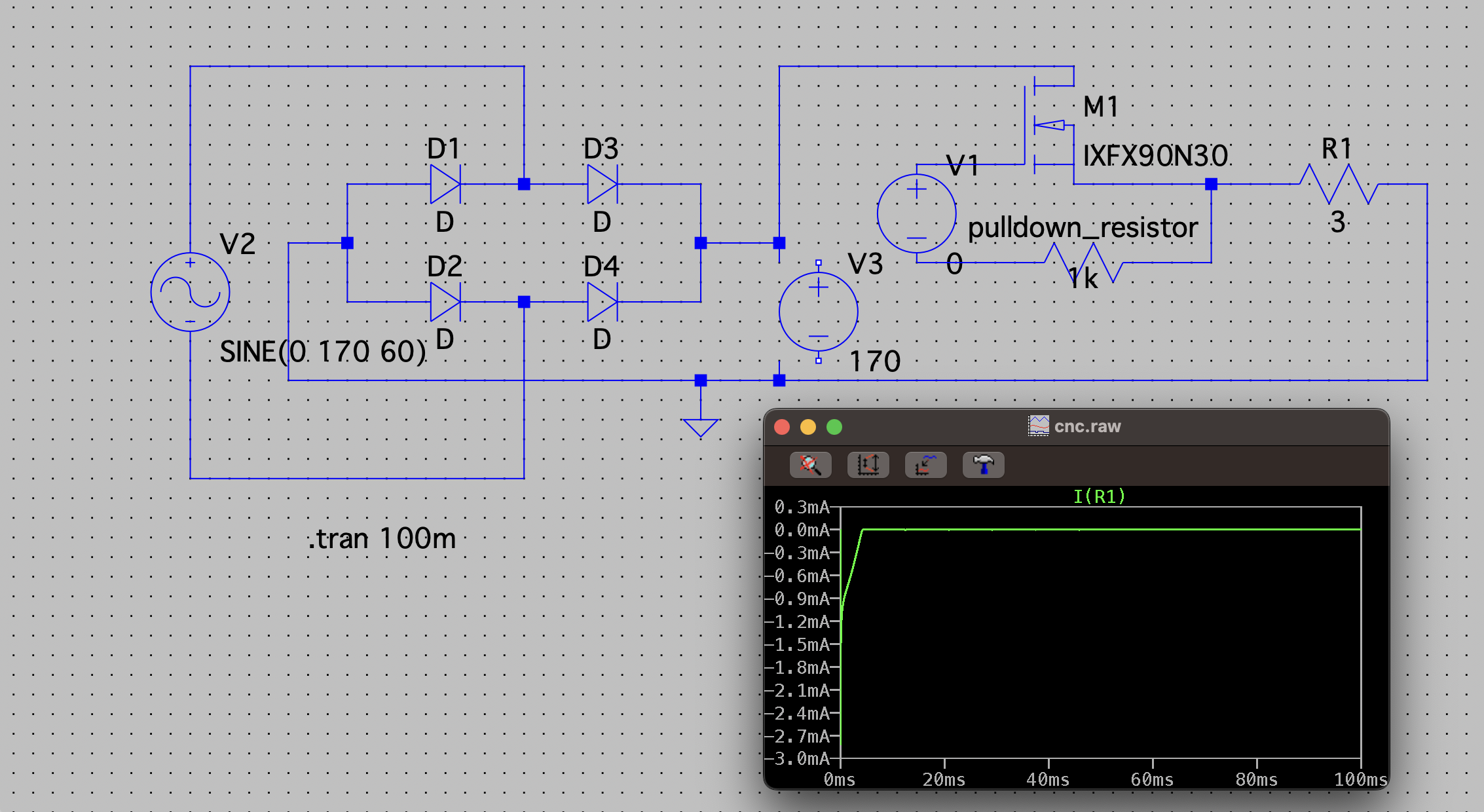I've been having some trouble getting a pulldown resistor to behave as expected in LTspice. Here are two screenshots of my circuit.
This circuit has a full wave bridge rectifier convert AC (USA household wall voltage) into DC, which then goes into a power MOSFET to drive a load (motor). The only difference is the change in pulldown resistor value from 10k -> 1k, and as you can see the 10k resistor makes the load draw a transient 5 amps (the negative is just cause of the direction). This doesn't make any sense because \$V_{GS}=0\$ in both cases so the MOSFET should be off. I tried replacing the rectifier with a pure DC voltage source (V3 in screenshot), and the transient current effectively disappears. I am wondering if this is some numerical simulation failure in LTspice or if this is truly indicative of real-world MOSFET behavior, e.g. hand-wavily perhaps some AC component of the rectified DC signal and the parasitic capacitance in the MOSFET can cause the pulldown resistor value to matter.
Anybody have ideas? Relatively new user to LTspice here, so open to all advice/suggestions.
PS: the sim window says 'cnc.raw' because this is a simulation of the metal CNC that I've been fixing :)


